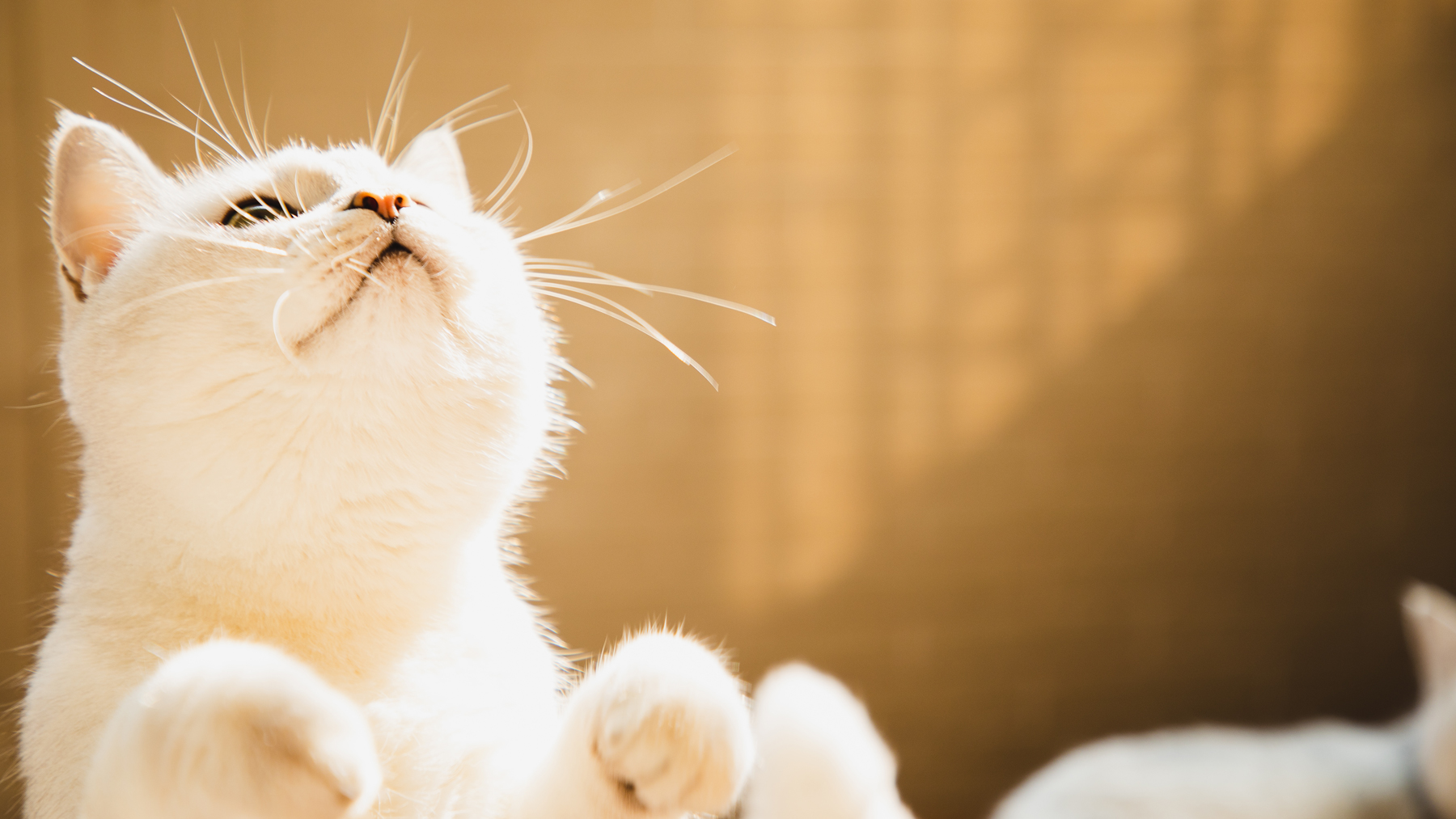Boost your cat’s happiness with 10 simple tips from a feline behaviorist
We can't read our cats' minds but we can try to enhance their daily lives with these simple tips from a cat behavior expert

The last thing you want to be worrying about as a cat parent is whether or not your cat is unhappy or unsatisfied. Whether you're a seasoned cat owner and want to double check you are doing all the right things for your cat's mental well-being or you're just about to become a new kitty parent, we thought you might like to catch up on ten top tips from a feline behaviorist.
Of course, regularly replenishing your moggy's bowl with the best dry cat food or best wet cat food is a no-brainer. But we also need to make sure our kittens and cats stay mentally and physically stimulated and that they feel safe and secure in their home environment.
Fortunately, the Kittysitty Cat Behaviorist has shared a short video to Tiktok where she reveals ten important steps all cat owners can take to boost the mood of their cat. Watch below to get the latest feline 101...
Don't worry if you didn't quite catch all ten of the Kittysitty Cat Behaviorist's tips above, we've listed them all below for you to take note of...
1) Provide cardboard boxes
As the Kittysitty Cat behaviorist says, "These are cheap as chips"! Although they may be a slight eyesore in your home, they are a great way to help your cat feel safe and secure. They like enclosed spaces and would hunt for spaces like this in the wild to protect themselves from predators.
2) Provide tunnels
Get the best advice, tips and top tech for your beloved Pets
You will find cat tunnels easily online or in any pet store. They come in all shapes and sizes so don't worry if you have limited space. These home cat accessories help cats to experience the activity and behaviors they would take part in out in the wild such as running, hiding and pouncing.
3) Let them watch cat TV
You can stream cat TV on your television, your phone or iPad and keep your moggy occupied while you're out the house or busy. It's a great way for them to watch other animals but don't substitute this with playtime as they require daily mental and physical stimulation.
4) Provide cat grass
Cat grass should not be confused with the grass you find on your lawn. Cat grass is grown inside for cats from a mixture of things like wheat, barley and rye. It can aid your kitty's digestion and provide them with beneficial vitamins and minerals.
5) Give them sensory toys to play with
The Kittysitty Cat behaviorist encourages cat owners to consider buying more 'sensory creative toys' rather than simple 'fluffy mice'. If you're not sure where to begin looking, check out our roundup of the best interactive cat toys. Always ensure to switch up your kitten or cat's toys every day. "Cats are a bit like toddlers, they’ll have a toy out for two minutes and then they’re bored," Kittysitty explains, "So giving them something else to play with is really really useful."
6) Get your cats litter box ratio right
The basic rule for how many litter boxes you should have is one box per cat, plus one extra. Don't be alarmed if you own a few cats, you just need one for each and only one extra for the whole lot. It's a general rule to ensure that your moggy has space and gives them choice, hopefully eliminating the option to urinate on your nice rug or sofa.
7) Provide suitable water bowls
It may sound a little specific but it's a good idea to opt for wide shallow water bowls when choosing one for your cat. This will help prevent whisker stress, which is when a cat experiences sensory overload from repeatedly touching a surface. The cat behaviorist also stresses that you don't put food next to water.
8) Provide a water fountain
"It always gives them a fresh supply of trickling water which encourages them to drink," says the Kittysitty behaviorist. Hydration is very important for cats especially indoor ones who don't get moisture from catching and eating prey.
9) Provide safe spaces
Like with the cardboard box tip mentioned above, cats love to feel safe. Make sure your moggy has cosy places to snuggle up in, or hiding locations. "Anywhere to make your cat feel secure," is what the Kittysitty behaviorist recommends.
10) Provide climbing areas
It's in a cat's natural instinct to climb since high places keep them safe from danger and it's a great way to stimulate them mentally and physically. Take a look at these best cat trees if you're looking to provide a playground for your moggy at home.
If you'd like more information on caring for your cat's mental well-being then you might like to read our list of six ways to tell if your cat is sad or 10 signs of a happy cat.

Jessica holds a journalism degree from Cardiff University and has authored articles for renowned publications, including PetsRadar, Fit&Well, LiveScience, Runner's World, The Evening Express, and Tom's Guide. Throughout her career in journalism she has forged connections with experts in the field, like behaviorists, trainers, and vets. Through her writing, Jessica aims to empower pet owners with accurate information to enhance their furry companions' lives.
